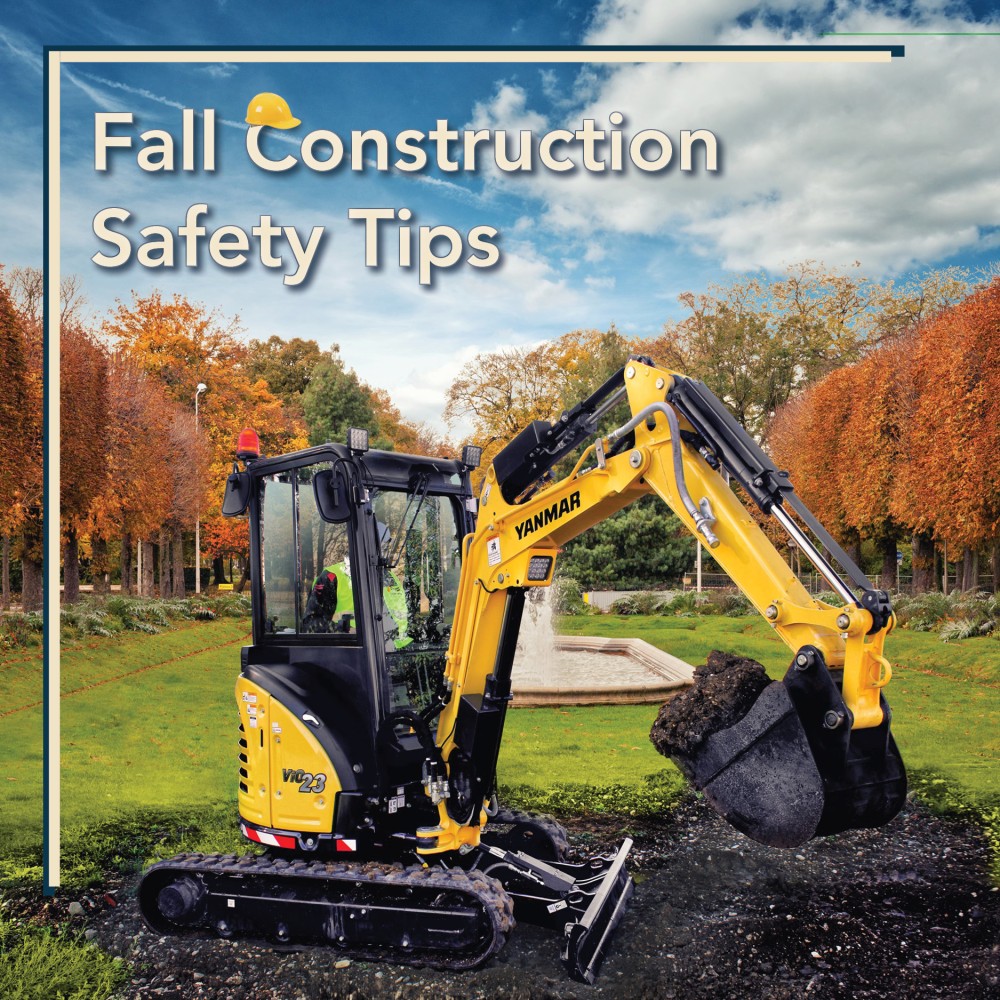
Each season brings its own construction hazards, from heat illness in summer to freezing cold temperatures and icy conditions in winter. Autumn is no exception. Whether wrapping up large summer projects or scrambling to get a new build weather-right before winter, fall construction poses its own set of hazards, such as muddy ground and low light.
To prevent accidents and equipment damage that can throw your project off schedule, here are a few safety tips.
TAKE PRECAUTIONS IN MUDDY CONDITIONS
Mud, and mud-related accidents, must be taken seriously. Mud might seem harmless enough, but it can increase the risk of slips and falls and make the ground unstable for equipment.
- Improve Muddy Terrain: If possible, set up drainage on your jobsite to remove some of the mud. Consider laying gravel for traction in key areas.
- Use Caution On Steps: Remind everyone to wipe their boots frequently, especially before climbing ladders or mounting or dismount equipment.
- Erect Scaffolding Properly: Scaffolding should never been erected directly on soft, muddy or frozen ground. Use a mud sill. These stable wood planks, placed under the scaffold footings, distribute the weight of the scaffold, keeping it from moving or sinking into the mud. After a storm, check scaffolding to ensure its still stable.
- Stabilize Heavy Equipment: Heavy equipment can become stuck in the mud really fast. Even if using a rough terrain forklift, mud can increase rollover risk. Tire chains or tracks increase traction. Heavy equipment mud mats can turn muddy areas into safe access roads. At the end of the workday, hose off equipment to keep the mud from caking and jamming machines.
CLEAR LEAVES TO PREVENT FALLS & EQUIPMENT MALFUNCTIONS
Fall foliage looks beautiful, but once the leaves fall, they become hazards. Leaves can hide uneven ground and become slick, increase the risk of falls. They can also block the air intake or exhaust on equipment.
Remove leaves from walkways and work surfaces at the beginning of each work day and as needed during the course of the day. Consider using a walk-behind leaf blower, a sweeper or even a handheld vacuum. Before you use equipment, clear any leaves from the intake, exhaust, windshield, mirrors, and tires.
STORE EQUIPMENT & MATERIALS
When possible, store equipment in enclosed spaces to protect it from leaves, falling branches and debris-laden high winds. On jobsites, a portable storage container is a good option to consider.
Take extra precautions if a major storm is expected. Remove and securely store as much equipment as possoble. Move materials into a secure storage area as well. Cover materials and equipment that can't be moved with a heavy duty tarp or use tie-downs and sandbags to keep them from blowing away. Take down cranes, scaffolding, light towers and other equipment that could pose a threat. If needed, board of windows and doors.
PROVIDE ADEQUATE LIGHT
With the coming of fall comes shorter hours of daylight in a work day. Low light makes it harder to judge position, shape or speed of objects. Working in low light can also cause eye strain and headache (no wonder OSHA requires how bright construction areas need to be). From light strings to portable light stands to towable light towers, plan to set up light towers on level ground. With a stable base, light towers can withstand winds up to 65 mph.
PRACTICE GENERATOR SAFETY
Portable generators and water just don't mix. It's highly advised to not operate a generator on a wet surface. Unless your generator has a waterproof canopy, don't operate it in the rain.
To avoid carbon monoxide poisoning, use a portable generator only in a well-ventilated outdoor area, at least 20 feet away from windows, doors and vents.
MAKE ALLOWANCES FOR COLD & FLU SEASON
Hard as it may be, encourage sick employees to stay home; it's very possible you could find yourself with an entire crew down with the flu if they continue to come in when they're not feeling well. Review your paid leave policy with employees, and consider offering instructions on ways to prevent illness from spreading. It might not be a bad idea to ask schedulers to plan for illness-related absences and delays when booking jobs, too.
Fall is a busy, productive time for many contractors, and by taking a few simple steps, you'll keep your employees safe and your equipment in peak operating condition.